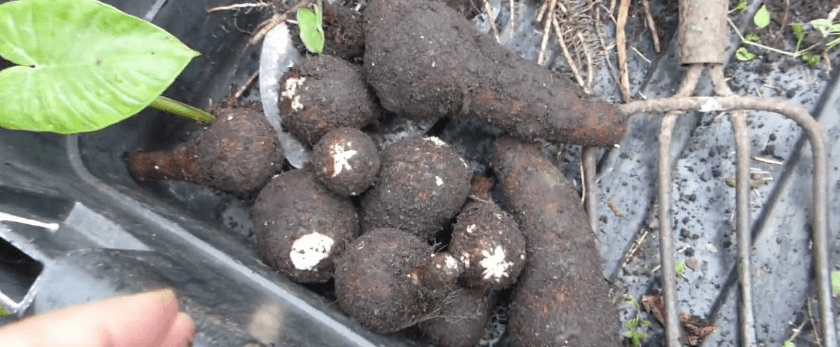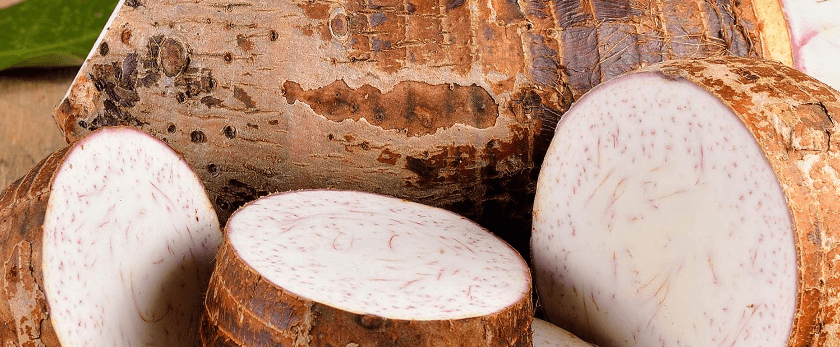Malanga, also known as taro or cocoyam, is a starchy root vegetable that is popular in many cuisines around the world. Not only is it delicious and versatile in the kitchen, but it is also a great addition to any sustainable garden. In this article, we will discuss how to grow malanga in your own backyard, as well as the best practices for caring for this plant. By following these tips, you can enjoy a bountiful harvest of malanga while also contributing to a greener, more eco-friendly lifestyle.
What is Malanga?
Before we dive into the details of growing malanga, let's first understand what it is. Malanga is a root vegetable that belongs to the Araceae family, which also includes other popular plants like elephant ears and peace lilies. It is native to tropical regions and is widely cultivated in countries such as India, China, and the Caribbean.
Malanga has a brown, hairy exterior and a creamy white flesh inside. It has a nutty, slightly sweet flavor and can be cooked in a variety of ways, including boiling, frying, or baking. It is a staple food in many cultures and is a great source of carbohydrates, fiber, and essential vitamins and minerals.

How to Grow Malanga
Now that we know what malanga is, let's discuss how to grow it in your own garden. Follow these steps to ensure a successful harvest of this delicious root vegetable.
Choosing the Right Location
Malanga thrives in warm, humid climates and requires plenty of sunlight to grow. Therefore, it is best to choose a spot in your garden that receives at least 6-8 hours of direct sunlight every day. It is also important to ensure that the soil is well-draining and rich in organic matter.
Planting Malanga
Malanga can be grown from either seeds or corms (underground stems). If you are using seeds, start by soaking them in water for a few hours before planting. If you are using corms, make sure to choose healthy, firm ones.
To plant malanga, dig a hole that is about 2-3 inches deep and place the seeds or corms inside. Cover them with soil and water thoroughly. If you are planting multiple malanga plants, make sure to space them at least 12 inches apart to allow for proper growth.
Watering
Malanga requires consistent moisture to grow, but it is important not to overwater it. Keep the soil moist, but not waterlogged. You can check the moisture level by sticking your finger into the soil. If it feels dry, it's time to water. During hot, dry weather, you may need to water your malanga plants more frequently.
Light
As mentioned earlier, malanga requires plenty of sunlight to grow. Make sure to choose a spot in your garden that receives ample sunlight throughout the day. If you are growing malanga indoors, place it near a window that receives direct sunlight.
Soil
Malanga grows best in well-draining, fertile soil. You can improve the quality of your soil by adding compost or organic matter before planting. This will provide the necessary nutrients for your malanga plants to thrive.
Fertilizer
Malanga plants benefit from regular fertilization, especially during the growing season. You can use a balanced fertilizer every 4-6 weeks to provide the necessary nutrients for healthy growth. Make sure to follow the instructions on the fertilizer package for the correct dosage.
Pruning
Malanga plants can grow quite large, with leaves reaching up to 3 feet in length. To prevent overcrowding and promote better air circulation, it is important to prune your malanga plants regularly. You can do this by cutting off any dead or damaged leaves at the base of the plant.
Best Time to Grow Malanga
Malanga can be grown year-round in tropical regions, but it is best to plant it in the spring or early summer in temperate climates. This will give the plants enough time to establish themselves before the colder months. If you live in a colder climate, you can also grow malanga as an annual plant, starting from seeds or corms in the spring and harvesting in the fall.
Common Problems with Malanga
While malanga is a relatively easy plant to grow, it can still face some common problems. Here are a few issues you may encounter and how to address them:
- Pests: Malanga plants can be susceptible to pests such as aphids, snails, and slugs. You can use natural methods like neem oil or insecticidal soap to control these pests.
- Diseases: Malanga plants can also be affected by diseases such as root rot and leaf blight. To prevent these diseases, make sure to provide proper drainage and avoid overwatering.
- Nutrient deficiencies: If your malanga plants are not growing well or have yellowing leaves, it may be a sign of nutrient deficiencies. You can address this by fertilizing regularly and ensuring the soil is rich in organic matter.
Responsible Disposal Methods
As with any plant, it is important to dispose of malanga plants and their parts responsibly. If you are composting, make sure to only add healthy, disease-free plants to your compost pile. If you are disposing of diseased plants, it is best to throw them away in a sealed bag to prevent the spread of disease.
Conclusion
Growing malanga is not only a great way to add a delicious and versatile vegetable to your diet, but it is also a sustainable gardening practice. By following the tips outlined in this article, you can successfully grow malanga in your own backyard while contributing to a greener, more eco-friendly lifestyle. Remember to choose a sunny spot, provide consistent moisture, and fertilize regularly for a bountiful harvest of this nutritious root vegetable. Happy gardening!










